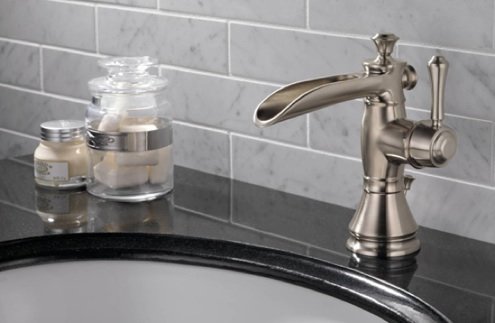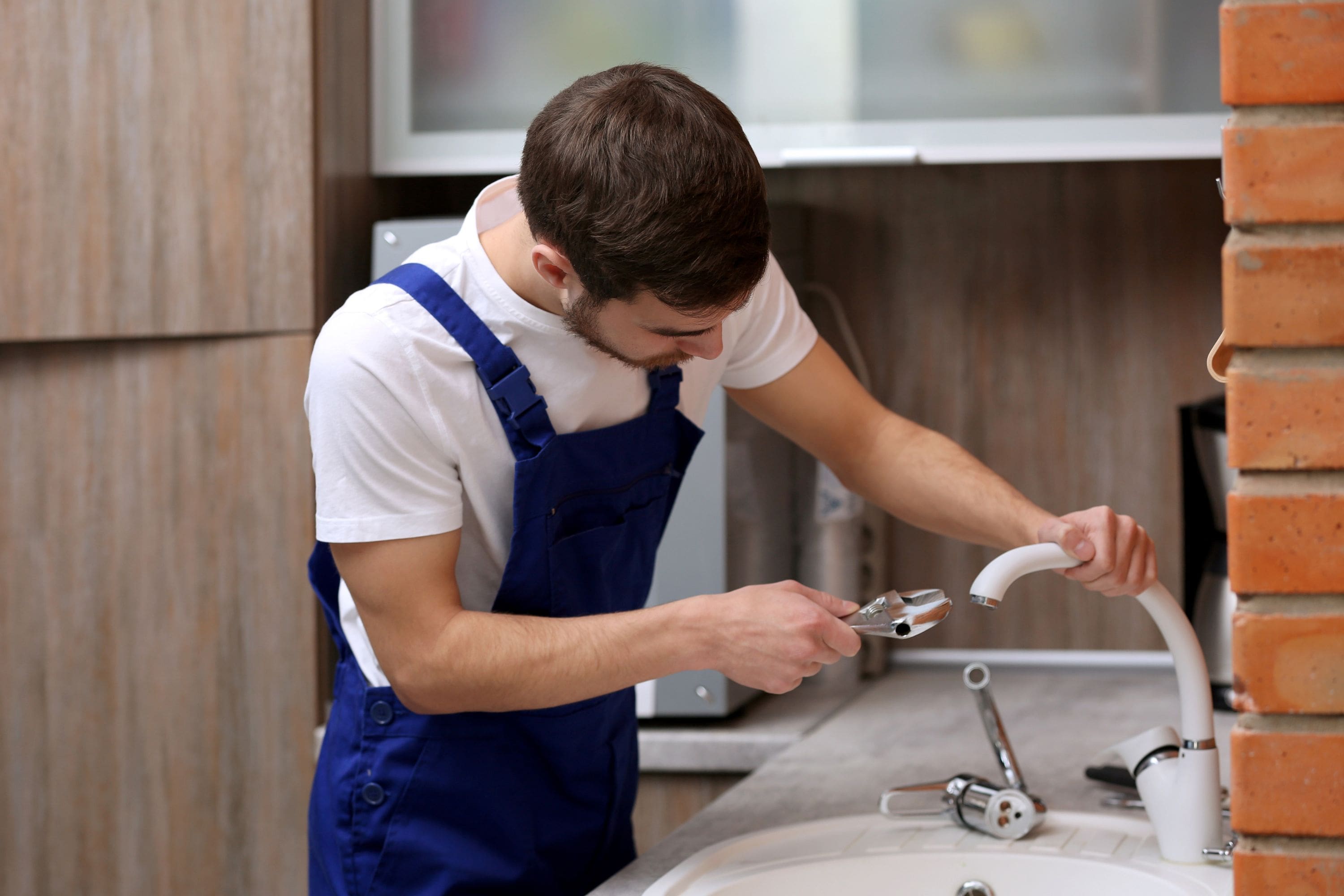Learning the Significance of Resolving a Broken Faucet
Learning the Significance of Resolving a Broken Faucet
Blog Article
Are you currently on the lookout for related information about How to Fix a Dripping or Leaky Faucet ?

Trickling faucets might feel like a small inconvenience, yet their impact exceeds simply the inconvenience of the audio. From wasting water to sustaining unnecessary economic expenses and wellness risks, ignoring a leaking tap can lead to various repercussions. In this write-up, we'll explore why it's important to resolve this usual family concern without delay and successfully.
Waste of Water
Ecological Influence
Leaking taps add substantially to water wastefulness. According to the Epa (EPA), a solitary faucet dripping at one drip per second can waste greater than 3,000 gallons of water per year. This not only strains water sources however also impacts ecological communities and wildlife dependent on them.
Step-by-Step Overview to Taking Care Of a Dripping Tap
Devices Required
Prior to trying to deal with a dripping tap, collect the needed devices, consisting of an adjustable wrench, screwdrivers, substitute components (such as washers or cartridges), and plumber's tape.
Common Faucet Issues and Their Solutions
Identify the type of tap and the details problem triggering the drip. Usual troubles consist of damaged washing machines, rusty shutoff seats, or defective O-rings. Refer to maker directions or on the internet tutorials for step-by-step guidance on repair work.
Financial Prices
Increased Water Bills
Past the ecological impact, trickling faucets can inflate water expenses substantially. The accumulated waste with time translates right into greater utility costs, which can have been avoided with prompt fixings.
Potential Building Damage
Additionally, prolonged leaking can bring about harm to fixtures and surfaces bordering the tap. Water build-up can cause discoloration, rust, and even architectural issues if left neglected, resulting in additional repair prices.
Health Issues
Mold And Mildew and Mildew Growth
The consistent existence of moisture from a leaking tap creates an ideal environment for mold and mildew and mold growth. These fungi not just endanger indoor air quality but additionally posture health and wellness threats, especially for individuals with respiratory system problems or allergies.
Waterborne Illness
Stationary water in trickling faucets can end up being a breeding place for microorganisms and other pathogens, raising the risk of waterborne illness. Impurities such as Legionella germs grow in stagnant water, possibly leading to serious health problems when ingested or breathed in.
Do it yourself vs. Expert Fixing
Advantages and disadvantages of DIY Repair Work
While some might attempt to deal with a dripping faucet themselves, do it yourself fixings include their very own collection of difficulties. Without correct expertise and devices, do it yourself attempts can aggravate the concern or bring about insufficient repairs, prolonging the issue.
Benefits of Employing a Specialist Plumber
Employing a specialist plumber ensures that the underlying root cause of the leaking tap is resolved effectively. Plumbers have the experience and tools to diagnose and repair faucet issues effectively, conserving time and decreasing the threat of more damage.
Ecological Duty
Individual Contribution to Preservation
Taking obligation for dealing with trickling taps lines up with wider initiatives toward water conservation and environmental sustainability. Every individual's actions collectively make a significant effect on preserving priceless sources.
Sustainable Living Practices
By focusing on timely repair services and embracing water-saving practices, individuals add to lasting living methods that benefit both existing and future generations.
Safety nets
Routine Upkeep Tips
To prevent dripping faucets, carry out regular maintenance such as cleaning aerators, inspecting for leakages, and changing worn-out components quickly. Furthermore, think about setting up water-saving gadgets or upgrading to extra reliable components.
Importance of Prompt Fixes
Attending to leaking taps as soon as they're observed stops further water waste and potential damages, ultimately conserving both water and cash in the future.
Effect On Property Worth
Understanding of Well-Maintained Residential Property
Maintaining a home in good condition, consisting of addressing upkeep problems like trickling taps, improves its perceived value and worth among prospective purchasers or lessees.
Influence on Resale Worth
Qualities with well-maintained plumbing components, consisting of taps, command greater resale values in the property market. Dealing with dripping faucets can contribute to a positive impression throughout residential property examinations and negotiations.
Final thought
Attending to a dripping faucet exceeds simple benefit; it's an essential action toward preserving water, reducing monetary expenses, and securing wellness and building. Whether through do it yourself repair work or specialist support, taking action to fix dripping faucets is a tiny yet impactful means to promote accountable stewardship of sources and add to a much healthier, a lot more sustainable future.
How to Fix a Leaky Faucet: Step-by-Step Repair Guide
A leaky faucet may seem like a simple annoyance, but if it's not fixed promptly, that leak could cost hundreds to potentially thousands. From water damage to mold, mildew, and high water bills, even a tiny leak can be catastrophic if left unattended. Damage like this can even affect the overall value of your home, so it's important to take the right approach for leaky faucet repair. You may need the help of a plumber in some cases, but we've got a few tips you can try on how to fix a leaky faucet before calling the pros.
Four Faucet Types
When you're learning how to fix a leaky faucet, the first step is knowing what kind of faucet you're working with! There are four common types.
Cartridge Faucets
Cartridge faucets come in one- or two-handled varieties. In one-handled cartridge faucets, hot and cold water combines in a single cartridge. In the two-handled versions, hot and cold water are controlled separately and mixed in the faucet.
Ball Faucets
Ball faucets have a single lever you push up and down to adjust the pressure and rotate to change the temperature. A slotted metal ball controls the amount of water allowed into the spout.
Compression Washer Faucets
They're the oldest type of faucet, but they're still used in many homes — especially older ones. Compression faucets have two separate handles that, when turned, raise or lower the washer that seals a water valve. This valve stops water from flowing through the faucet when it is turned off.
Disc Faucets
Disc faucets rarely need to be repaired due to their maintenance-free design. The water flow is controlled by two discs — the upper one raises and lowers against a fixed lower disc, creating a watertight seal. If your disc faucet starts leaking, you may need to replace the seals or clean residue buildup from the inlets.
Fixing a Leaky Faucet
Step 1: Turn Off the Water
Whether you're learning how to fix a leaky bathtub faucet or how to fix a leaky kitchen faucet, always turn off the water supply to your working area when you're fixing a leak. The last thing you want is a flood added to your list of things to fix.
Look for the shutoff valves below your sink or around the tub and turn them clockwise to stop the water flow. If your faucet doesn't have shutoff valves, you may need to turn off the water for the whole house. Check to make sure it's off by turning the faucet on. If nothing comes out, you're ready to start the repair.
Step 2: Take Apart the Faucet
How you disassemble your faucet depends on the type of fixture you have. You can use a flathead screwdriver to remove the caps on top of the handle or handles for cartridge and compression faucets. Inside, you should see handle screws. Unscrew these with a screwdriver to remove the handle.
Disc- and ball-style faucets will typically have an inlet screw near the handle, and removing that will reveal the interior of the faucet.
Detach the Valve Stem
For cartridge- and compression-style faucets, you'll see the inner valve stem or cartridge once you remove the faucet handles. If you have a compression faucet, unscrew the brass valve stem. If you have a cartridge faucet, pull out the cartridge. If your cartridge has been in place for a while, it may require some tools or extra force to remove it due to mineral deposits.
Examine and Replace Parts
Once you've removed the parts, check them out to confirm what needs to be replaced. You may see corroded rubber washers, O-rings, stems, or cartridges. On a ball-style faucet, check the seats and springs for damage.
If you need to repair a leaky disc faucet, check the inlet and seals on the lower disc.
Once you determine what parts must be replaced, visit your local hardware store. Bring the damaged parts with you to ensure you can purchase the correct components to replace them.
Clean Valves and Faucet Cavity
If you've removed a stem or cartridge, you may notice mineral buildup in the faucet's threads. Use white vinegar to clean the valve seat by soaking it for a few minutes, then scrub it away with a soft toothbrush and rinse with warm water. You can also clean the interior of the faucet in the same way.
Reassemble the Faucet
Once your faucet is cleaned and the required parts have been replaced, it's time to reassemble it. Put the pieces back together and slowly turn the water supply back on. Doing this slowly is crucial because too much initial water pressure can damage the new hardware you've just installed.
https://homewarranty.firstam.com/blog/how-to-fix-leaky-faucet

As a keen person who reads on Why Is It Important To Fix Your Leaking Tap/Faucet?, I thought sharing that post was beneficial. Enjoyed reading our content? Please quickly share it. Help others check it out. Thanks a bunch for your time. Return soon.
Report this page